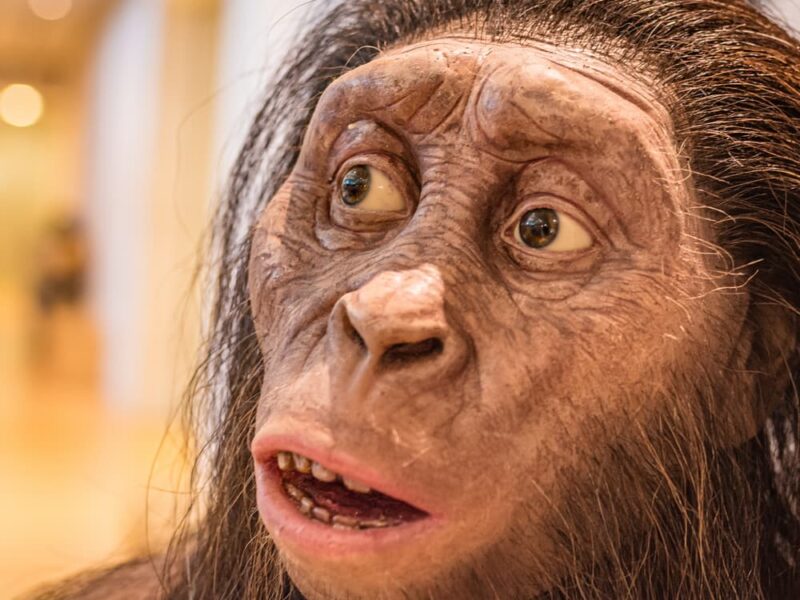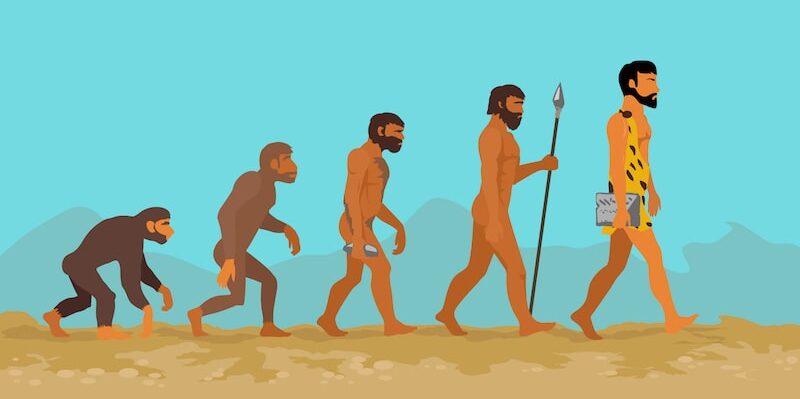We explain what the Stone Age is, what its characteristics and its stages are. In addition, the ancestors of the human and more.
What is the Stone Age?
The Stone Age is the first of two periods in prehistory , aside from the Metal Age , in which humans used and worked stone as a primitive tool. The period dates from almost 3 million years ago to 4,000 years ago , after an extensive period of human evolution that began the subsequent Metal Age.The Stone Age is made up of three stages: Paleolithic , Mesolithic and Neolithic . However, the researchers estimate that the stone as a simple tool may have been used long before by primate ancestors. The stones worked by ancient humans reveal information about their lifestyle and how they evolved over time.
During the Paleolithic, the first stage of this Era, cultural development was influenced by environmental factors , a consequence of the glacial period. Some 15,000 years ago it is estimated that the planet began a period of warming, a process in which many animals accustomed to the glacial cold became extinct.
Therefore, new types of plant and animal life arose as the temperature increased, which allowed humans to settle permanently without the need to migrate in winter.
Characteristics of the Stone Age
The Stone Age was characterized by:
- The small groups of humans who lived in a nomadic way .
- The use of stone to crush, grind and extract meat from prey or collect fruit from plants.
- The discovery and mastery of fire by Homo erectus who used it as a source of heat and to scare away wild animals.
- Climate changes , consequence of the glaciation period.
- The first human groups that began to live in a sedentary way due to the climatic conditions and the availability of food that they obtained by hunting and gathering.
- The simple hammer stone tools , which were used to cut or break seeds and fruits.
- Tools made of bone or antlers dating from the last stage of the Stone Age, in the Neolithic.
- Arrowheads or sharp elements made with stones. However, there is little evidence of violent clashes between humans during the Stone Age and it is estimated that this is due to the low population density.
- The evolutionary leaps of the human species , in which motor and intellectual capacities were developed.
Stone Age stages
The Stone Age is divided into three general periods:
- Paleolithic . It is the longest period that includes from almost three million years ago to 10,000 years ago and is divided into Upper, Middle and Lower Palaeolithic. It was characterized by the lifestyle of the human being who lived in a nomadic way in search of water and food and took refuge in caves.
- Mesolithic . It is the period that includes from 10,000 to 5,000 years ago and that was characterized by the end of the glacial process and the subsequent warming of the Earth. In this stage small permanent human settlements arose.
- Neolithic . It is the period from 5,000 to 4,000 years ago. It was characterized by the formation of the first human populations, the sophisticated stone, bone and ivory tools, ceramic utensils and the work of the land to obtain food. The last evolutionary leap of humanity was very significant and meant the end of the Stone Age and the beginning of the Metal Age .
Ancestors of human
 Primates are the ancestors of the human being that also existed before the Stone Age. The australopithecus is an extinct genus of primates that was one of the most similar species to the human being , because it managed to evolve and adapt to the environment. The first emerged around four million years to a million years ago, in the territory of the current African continent.
Primates are the ancestors of the human being that also existed before the Stone Age. The australopithecus is an extinct genus of primates that was one of the most similar species to the human being , because it managed to evolve and adapt to the environment. The first emerged around four million years to a million years ago, in the territory of the current African continent.The evidence of the genus H omo or H ombre dates from almost three million years ago and gives rise to the Stone Age. It is estimated that the human descended from the australopithecines.
Along with other primates, this species was part of the general group of hominids , that is, a family of primates that have the ability to walk upright and are endowed with intelligence . Hominization is the process of biological evolution of the human species, which ranges from the ancestors to the present.
Evolutionary leaps of the human being
 During the Stone Age there was a transformation process in the motor and intellectual capacities of the human being that represented the following evolutionary leaps:
During the Stone Age there was a transformation process in the motor and intellectual capacities of the human being that represented the following evolutionary leaps:
- Homo habilis , meaning "skillful man." It consists of one of the first species of the genus H omo . It was characterized by having a more rounded skull than primates, larger molars, a face with a less prominent jaw and greater motor skills, especially to manipulate elements such as stone.
- Homo erectus . It was characterized by a larger cranial cavity, a robust and taller body that could reach up to 1.80 meters. Its name is due to the fact that it was the first species to walk fully upright. He was noted for discovering and manipulating fire.
- Neanderthal man . It was characterized by being robust, having short limbs, a larger jaw opening and a large cranial capacity. It is estimated that he had limited cognitive abilities, such ascave. It adapted to live in very cold climates.
- Homo sapiens . It is estimated that it appeared 100,000 years ago and was characterized by having physical characteristics more similar to modern man. He settled in small permanent towns and built huts. In addition, he was noted for the development ofemotional intelligence.
The above content published at Collaborative Research Group is for informational and educational purposes only and has been developed by referring reliable sources and recommendations from technology experts. We do not have any contact with official entities nor do we intend to replace the information that they emit.
Cultural journalist with great interest in education and technological innovation in the classroom. The future passes through technology and it is already here. .
Leave a reply
Your email address will not be published. Required fields are marked *Recent post

Sport: What Is It, Types, Risks, Features, Characteristics and Examples
September 23, 2021

Dogs: Emergence, Features, Characteristics, Feeding and Breeds
September 24, 2021

Story: Definition, Elements, Structure, Features and Characteristics
September 24, 2021

Essay: Definition, Structure, Features, Characteristics, How to Do It
September 24, 2021
